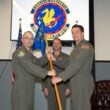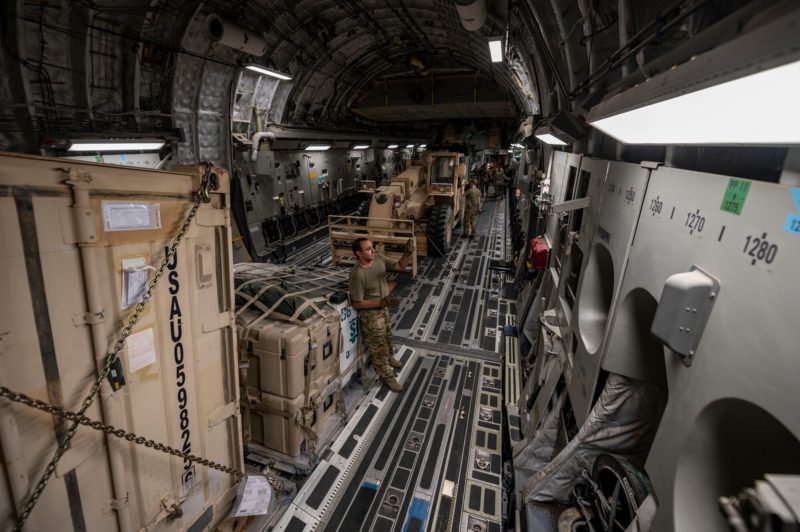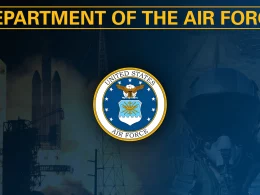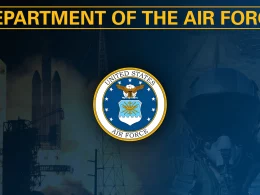WRIGHT-PATTERSON AIR FORCE BASE, Ohio — Want to know how many aircraft tires or satellites are in Department of the Air Force asset inventory? The Integrated Logistics System – Supply or ILS-S has the answer.
ILS-S is a modern Logistics Information Technology (LogIT) Defense Business System (DBS) capability that supports Department of the Air Force active-duty, Air National Guard and Air Force Reserve operations, as well as our sister services and their missions depending on where they are located.”
ILS-S is also a financial data feeder system that provides LogIT support in the functional area of Department of the Air Force base-level supply/materiel management.
ILS-S functions includes ordering, receiving, storage, distribution, tracking, disposition and movement of supplies, organizational account management, weapon system spares support, cataloging, computing stock levels, mobility, warranty management, financial reporting, inventory control point, supply point, contractor-provided weapon system support, aircraft, engine and missile maintenance, hazardous material management, communications security management and mobile technology.
The system is a modern, elastic, secure, U.S. Air Force Cloud One Amazon Web Services (AWS) GovCloud application with 120 interface agreements with 46 systems to support 18,000 end users and over 100,000 consumers of ILS-S information at 250 military installations. ILS-S tracks over 35 million assets valued at $18 billion—assets that are optimally distributed and stored across 1.7 million warehouse locations. ILS-S also provides inventory control of 230,000 assets in deployable air transportable containers to support contingencies and special operations.
“We track almost every asset the Department of the Air Force uses,” said Staff Sgt. Gabriel Fox, a member of the Business and Enterprise Systems Directorate’s ILS-S Capability Delivery Team (CDT), which is responsible for operating and maintaining ILS-S. “Everything from dog food, weapons, radar parts, vehicles, aircraft, clothing items and paper.”
ILS-S has multiple, modern features and business rules (programming) to track and manage such a wide array of DAF assets—to include the following:
- Automatic Sourcing providing event-based real-time identification of the best enterprise source to satisfy an order ensuring the right decision is made with automated fulfillment
- Excess Redistribution leveraging automatic sourcing infrastructure and realizing over $1 Billion in costs avoidance by identifying already purchased DAF assets
- Real-time Enterprise Asset Visibility spanning the retail and wholesale supply chains presenting total asset visibility in a single comprehensive view
- Nuclear Weapons-Related Material (NWRM) enterprise management & asset tracking
- High Priority Orders Management providing infrastructure to ensure mission critical weapons systems remain operational and can be extended to other mission areas
- Mobility Management providing chemical, biological, radiological and nuclear (CBRN) gear management
- Enterprise Orders Management provides real-time management and visibility across the logistics enterprise
- Financial Improvement and Audit Readiness (FIAR) compliant system with the ability to apply FIAR readiness to additional capabilities
- Proven ability to subsume enterprise systems including high priority order management, mobility, shelf life, and readiness spares for non-airborne assets
- Defense Logistics Management Standards (DLMS) compliant with the ability to transform non-compliant enterprise data into compliant DLMS transactions
To “Delight the User” and support a diverse and dynamic mission operations tempo, ILS-S is available 24×7 365 a year. ILS-S processes over 10 million transactions daily to include over 1.5 million orders.
Scott Hunter, the ILS-S Senior Functional Manager, recalls explaining to his dad what the team does for the Air Force.
“You know when you go to an auto parts store to get an alternator for the truck, and the clerk asks for the make and model, pulling up the information on the computer? The screen would show them the different parts that would work, if they have any in the store and where exactly they were,” Hunter said. “It’s the same system at every one of the company’s stores. They are all one connected network that talks to one another. If one store doesn’t have the alternator, they could check another store and if they have one, they could have it for you tomorrow. The Air Force has the same type of computer program the auto store has, and our team keeps this system up and running.”
“The CDT, our contractor industry partners and our service providers from finance, contracting, engineering, cybersecurity, testing, legal, human resources, enterprise IT support, Cloud One, DISA and many others—together we transformed ILS-S from an on premise, mainframe COBOL system into a modern, open systems standard Java application operating in an elastic, secure cloud environment,” said James Harbison, Lead Engineer for the ILS-S CDT. “We reduced our annual infrastructure hosting costs $25 million annually and in FY 2022, we’ll drive down infrastructure costs even further by employing reserved instances in our cloud environment.”
To successfully Operate, Innovate and Integrate in a cloud environment, the ILS-S CDT, it’s industry partners and BES service provider teammates have leveraged multiple, modern computing and software development concepts to include the following:
- Agile and a responsive and ever-improving delivery model emphasizing warfighter collaboration to deliver monthly production releases to support business needs
- Development Security Operations (DevSecOps) pipeline with security scanning, automated infrastructure provisioning and patching, and monitoring
- Continuous Integration/Continuous Delivery (CE/CD) pipeline with the ability to deploy from development through production in a fully automated fashion in less than one hour, integrating multiple active development and test baselines
- Open source makes up the majority of the ILS-S of the code base reducing the total cost of ownership and by using industry leading Spring and Apache products, enhances both stability while minimizing learning curves for new developers
- Mobile cross platform mobile solution using Progressive Web Application (PWA) technology & a native tablet presence supporting robust mobile application delivery
- Enterprise connectivity providing military network interoperability enabling over 46 systems to connect with ILS-S across a wide array of protocols minimizing external system integration efforts
- Proven modernization methodology using a “wrap and adapt” model minimizing risk during modernization by decoupling end user and system interfaces from the effort of modernizing the legacy system
- Automated Testing with over 17,000 automated functional end-to-end tests using a framework that enables non-technical personnel to develop robust tests
According to Jerard Campbell, ILS-S Acquisitions and Operations Capability Delivery Manager, “ILS-S has been blessed with exceptional contractor industry partnerships that enabled us to leverage modern software lifecycle concepts and tools that in the hands of our high-performing contractor development and functional supply subject matter expert teams—really changed how we operate,” he said. “Our release velocity is high—we recently successfully delivered our 42nd consecutive monthly release – 22 of those while we’ve been in a COVID-19 induced 100 percent work-from-home environment. But just as important, we’ve demonstrated the ability to “pivot” as higher priority customer requirements change. We want more of the goodness agility and flexibility can offer in our future support contracts.”
“This is a good news story,” added Herbert H. Hunter Jr., the portfolio manager of Enterprise Logistics Readiness within the Business and Enterprise Systems Directorate.
“And we have much more to share and intend to do so in future articles. This project greatly expanded the value of ILS-S—but now, our goal as a digital Air & Space Force is to continuously innovate not only ILS-S but all of our enterprise logistics systems by adopting new technologies that will amplify our mission readiness while driving down operational costs.”












